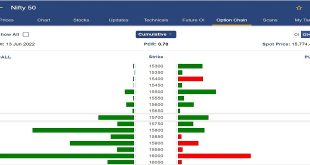The scale of government purchasing
The data points to a comparatively small manufacturing sector and the substantial employment impact of the Australian Government. Over the years the Australian Government has used reductions in staffing numbers as a strategy for meeting its fiscal targets—particularly in 1996. As can be seen in Figure 4, this has impacts on other industries, particularly the construction sector. More recently, the Australian Government has not exercised central control over staffing, leaving it to agencies to manage people within their overall budget allocations. Moreover, human resource management involves agencies choosing between direct employment, purchasing services from the market, or contracting through the robust staff contracting sector—particularly in accounting, finance and information technology services. This is reflected in the growth in business services employment, but the trends in the last two years suggests that the Government is returning to a policy of employment rather than contracting.
The innovation policy context: vision, plans, and frameworks
A listing of purchases by all agencies is included in Attachment A. Not all of the expenditure reported in Table 3 would be incurred directly in the ACT as it would flow through to purchases elsewhere in Australia and overseas. But the data does serve to indicate the magnitude of purchases from businesses and organizations that report their business location as Canberra. Procurement of goods and services classified by Australian and New Zealand Standard Classification of Commodities (ANZSCC) with a value in excess of $10m is provided in Table 4. A complete listing is included in Attachment A.
The data in Table 4 reflect a very substantial commitment to the purchase of machinery and equipment, particularly ICT related equipment (category 45), telecommunications services (75), leasing and rental services (83), computer, professional, research and other business services (84-87)—which includes advertising and placement and supply of personnel, which adds to $188m. There is also a very substantial commitment to community, social and professional services. The services provided in most of these categories are knowledge intensive and, potentially, are a major source of innovation for the Australian Government
Contracting with the Australian Government
All government ‘purchases’ must go through a time and resource intensive, legally driven, procurement process. This can be expensive and very high risk for suppliers. It also severely limits opportunities for productivity improvement in government services. Arrangements for large suppliers to involve sees in tendering are largely ineffective. Panel arrangements set up by corporate units within departments have endeavored to reduce costs, but program managers are not obliged to use them. The Department of Finance and Administration advises in its publication Selling to the Australian Government that ‘Australian Government officials are required to buy goods and services in an ethical, accountable and transparent manner’ and that ‘they must not seek gifts or other favors from potential suppliers, and should follow procedures and protocols designed to ensure a fair and consistent approach to procurement activities’. The guide also says that ‘potential suppliers should not approach agency officials in a way that might be interpreted as an attempt to improperly influence agency purchasing processes’ (Australia. Department of Finance and Administration, 2006).However, the Department advises of the importance of building relationships with potential purchasers.
Defence contracting
The Department of Defense, through Defense Materiel Organization (DMO), is a major purchaser of goods and services in Canberra, nationally and internationally. The DMO does not favor local suppliers, but suppliers do locate in Canberra to develop relationships with the Department within the frameworks outlined above. The DMO looks for capability; it does not have an industry policy that encourages innovation among suppliers. However, Canberra based start-up businesses that are able to address capability requirements in innovative ways have performed well. Australian Government Research and Development Grants have been important in sustaining businesses through the development period. The Department of Defense receives many ‘unsolicited proposals’ from industry due to its unique business requirements. These proposals may range from small, off-the-shelf supply items to more complex capability solutions. Defense has therefore established an Unsolicited Proposals Gateway to provide a single entry point for businesses and individuals to submit their proposals.
Issues and implications
The ACT is essentially a services economy with a predominant industry—public administration and defense. Government procurement practices provide little opportunity for ACT businesses to develop and market innovative supplier solutions to government—notwithstanding the acknowledged need for innovation in services to drive productivity performance
Summary
The option for pursing an innovation outcome is largely in the hands of the supplier, rather than as a partnership or collaboration between purchaser and provider as occurs in the private sector. Procurement policy procedures and guidelines make it very difficult to find innovative solutions. This is quite different from the approach being adopted in Europe and in the UK.
 Thefashion2day Popular Fashion News Website
Thefashion2day Popular Fashion News Website




